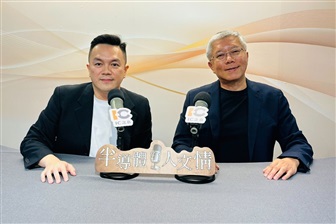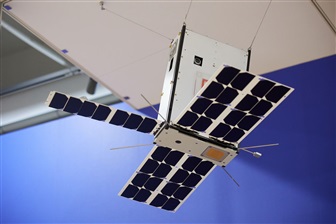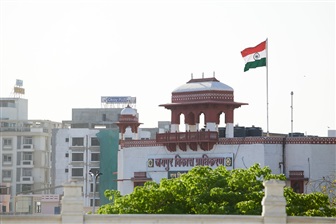Around the web
Displaying links tagged Semiconductors [back to index]
9 Oct 20088 Oct 20087 Oct 20086 Oct 20083 Oct 20082 Oct 20081 Oct 200830 Sep 200829 Sep 2008
SanDisk may have just concluded a multibillion-dollar patent licensing lawsuit with Samsung which could determine the future of both SanDisk and the flash industry at large. As SanDisk considers a US$5.8 billion takeover offer by the flash giant, private arbitration has given Sandisk rights to a technology that may well hold the future of flash memory.
Ars Technica
Broadcom claims Qualcomm has double-dipped on its patents by charging a fee for the use of its technology and another fee for its use in combination with another product. It's a practice that is referred to as patent exhaustion. The lawsuit "further asserts that these practices constitute patent misuse that has brought Qualcomm a financial windfall and brought harm to the industry and consumers," Broadcom said in a statement. In addition to licensing its technology, Qualcomm also makes chips for phones using the same IP.
CNNMoney
The Supreme Court has refused to consider appeals from Samsung Electronics in a case against Rambus, a memory design and patent licensing company, closing a saga that began in 2005 over alleged patent infringement.
Electronics Weekly
confidence, and cloudy visibility in the second half of the year have forced Gartner to lower its forecast for 2008 revenue growth in Asia/Pacific's semiconductor market. The research company in its Semiconductor DQ Monday Report yesterday decreased its estimate for the region from 6.4% to 5.2% growth on an annual basis.
Electronics Weekly
HeraldTribune.com
Japan's Toshiba is in talks to buy US chip maker Spansion, two industry sources said, in the latest sign of pressure for consolidation in the struggling memory sector. However, Toshiba spokesman Keisuke Ohmori said his company was not in talks to buy Spansion, and was also not considering such a move.
Reuters
AMD plans to announce Tuesday that it will split into two companies - one focused on designing microprocessors and the other on manufacturing them. Two Abu Dhabi investment firms will inject at least US$6 billion into the two firms, mostly to finance a new chip factory that AMD planned to build near Albany, NY, and to upgrade one of the company's existing plants in Dresden, Germany.
New York Times
...PV support is shaky in the European Union. In Spain, a new cap on solar electric installations of 300 MWp in 2009 could maroon more than a gigawatt worth of product. Other than Germany, which has implemented market controls, there's nowhere else for these stranded megawatts to go. In the United States, incentives remain weak in what is essentially a one-state market: California. However, even there, government incentives are necessary to fuel the willingness to deploy what remains a costly technology.
Semiconductor International
Our plan is to directly take legal action against the Japanese government, said Park Hyun, a Hynix spokesman. Park, however, didn't give the exact timing of the action but added that it wouldn't be this month. Hynix's challenge against Tokyo came following the US' decision not to renew punitive tariffs on its semiconductors. The European Union dropped tariffs on Hynix in April this year.
The Korea Times
South Korea, the world's top memory chip producer, suffered a drop in semiconductor exports for a third straight month in September amid a market glut and a slow US economy, data showed Sunday. Statistics at the Ministry of Knowledge Economy, disclosed by Yonhap news agency, showed semiconductor exports plunged 9.9% year-on-year to US2.96 billion in September, a consecutive fall since July.
AFP
The finding, reported on Sunday in the journal Nature Materials, offers a new way to process conventional silicon by slicing the brittle wafers into ultrathin bits and carefully transferring them onto a flexible surface. "We can make it thin enough that we can put it on plastic to make a rollable system. You can make it gray in the form of a film that could be added to architectural glass," said John Rogers of the University of Illinois at Urbana-Champaign, who led the research.
Reuters
In light of recent advances, Kool said, ASML has concluded that EUV is the most likely successor to 193nm imaging. Accordingly, the company is investing in manufacturing space and developing a production exposure platform...
Solid State Technology
The Register
Hardware verification languages have been around for over ten years now, with steadily growing adoption throughout this entire period. This adoption has been driven largely by the inability of manual directed verification approaches to keep pace with the complexity of the verification space for leading-edge design.
EDN.com
Legislation extending tax credits for the solar, wind and biodiesel industries gained new life on Wednesday as Senate leaders said they plan to attach the tax bill to a US$700 billion economic rescue package.
Reuters
In 2007, the sector attracted US$2.2 billion in venture-backed investments, up 45% from 2006. Biofuels production jumped from 4.9 billion gallons in 2006 to roughly 6.5 billion gallons last year. Meanwhile, in 2007 the US added 314 megawatts of new solar energy systems to the grid, up by 125% from the previous year.
Forbes
The US Department of Energy (DOE) is investing US$17.6 million in six projects that aim to develop prototype photovoltaic (PV) components and systems that will be commercialised by 2010.
Energy Efficiency News
Micron Technology fiscal fourth-quarter net loss widened on a US$205 million write-down on memory chips as their prices continued to decline. As the company posted its seventh straight quarterly loss, it announced a 20% cut in salaries of senior executives. "The global memory market continues to experience severe oversupply and price degradation," said CEO Steve Appleton.
Wall Street Journal
TSMC has pushed out or delayed its initial high-k/metal-gate offering until 28-nm. In contrast, IBM and its partners plan to offer what they claim is a better gate-stack solution at 32nm. As previously reported, IBM, Chartered and Samsung plan to offer a high-k and metal-gate solution for 32nm. The companies in IBM's fab club will not offer a SiON option at 32nm and beyond.
EE Times
The incorporation documents of Tejas Silicon Holdings (UK) Ltd. show that two of the executives of the company that has just bought the Germany fab operation of Atmel, are based in the United States. And apparently one of them, at least, has experience of running a mature fab operation.
EE Times
A 36% stake in Hynix Semiconductor, the world's second biggest dynamic random access memory (DRAM) chipmaker, is going up for sale but there are few bidders on the horizon because of a down market. Samsung Electronics is currently the No. 1 contender.
The Korea Times
Tejas Silicon Holdings has agreed to acquire the Heilbronn, Germany fab operation, including equipment, but will lease the facility and license fab process technology from Atmel. About 300 Atmel employees associated with fab operations and other support functions will become a part of Tejas Silicon, Atmel said. Atmel and Tejas Silicon will also enter into a supply agreement whereby Atmel will continue to procure products from the Heilbronn fab over a three-year period, Atmel said.
EE Times
The New York Times
The semiconductor IP industry has been the virtual and ongoing punching bag in the IC business. Lack of standards, quality metrics and business models have hurt the IP industry for years. Profitability remains elusive for many IP vendors. And most, if not all of those problems continue to haunt the industry as a whole. In total, there are 300 to 400 semiconductor IP vendors of all shapes and sizes. ARM, Cadence, MIPS, Rambus, Virage and Synopsys are among the bigger players, but most IP vendors are small-sized shops.
EETimes Asia
This is a bubble, Maeda told Reuters in an interview, referring to the estimated 200 solar power firms now in the sector and their plans to ramp up capacity. The prices of solar panels need to fall to less than half of what they are now (for their use to spread without subsidies), and current technology doesn't make that commercially viable. The industry is in for large price falls, he said, adding that it was dangerous to invest prematurely in inefficient technologies. "Eighty percent of solar sector makers will fail."
The Guardian
Since ATMI last updated its 2008 guidance on July 14, 2008, market conditions have significantly deteriorated. The Company's reduced revenue outlook is the result of a marked slowdown in demand across all of ATMI's semiconductor and flat panel display end markets, a trend that accelerated in the past month.
Marketwatch.com (Dow Jones)
The world's biggest flash memory chipmaker said it has recently begun shipping 16-gigabit multi-level cell (MLC) flash chips to clients using the 42nm level. Samsung's bigger Japanese rival Toshiba and Hynix Semiconductor are still using 43-nanometer and 48-nanometer technology, respectively.
The Korea Times
Spain's Cabinet has ratified proposals to set a new limit on subsidised solar power at a capacity level of 500 megawatts, Deputy Prime Minister Maria Teresa Fernandez de la Vega said on Friday. The approval ends weeks of wrangling over the new subsidy cap, which is far below the 1,200MW fixed in a current subsidy scheme expiring on Monday that helped make Spain the world's third-largest solar market after Germany and the United States.
The Guardian
Typhoon Jangmi is expected to lash Taiwan with massive amounts of rain and strong winds for a second day today after leaving a trail of destruction behind.
Taiwan News
234/506 pages







